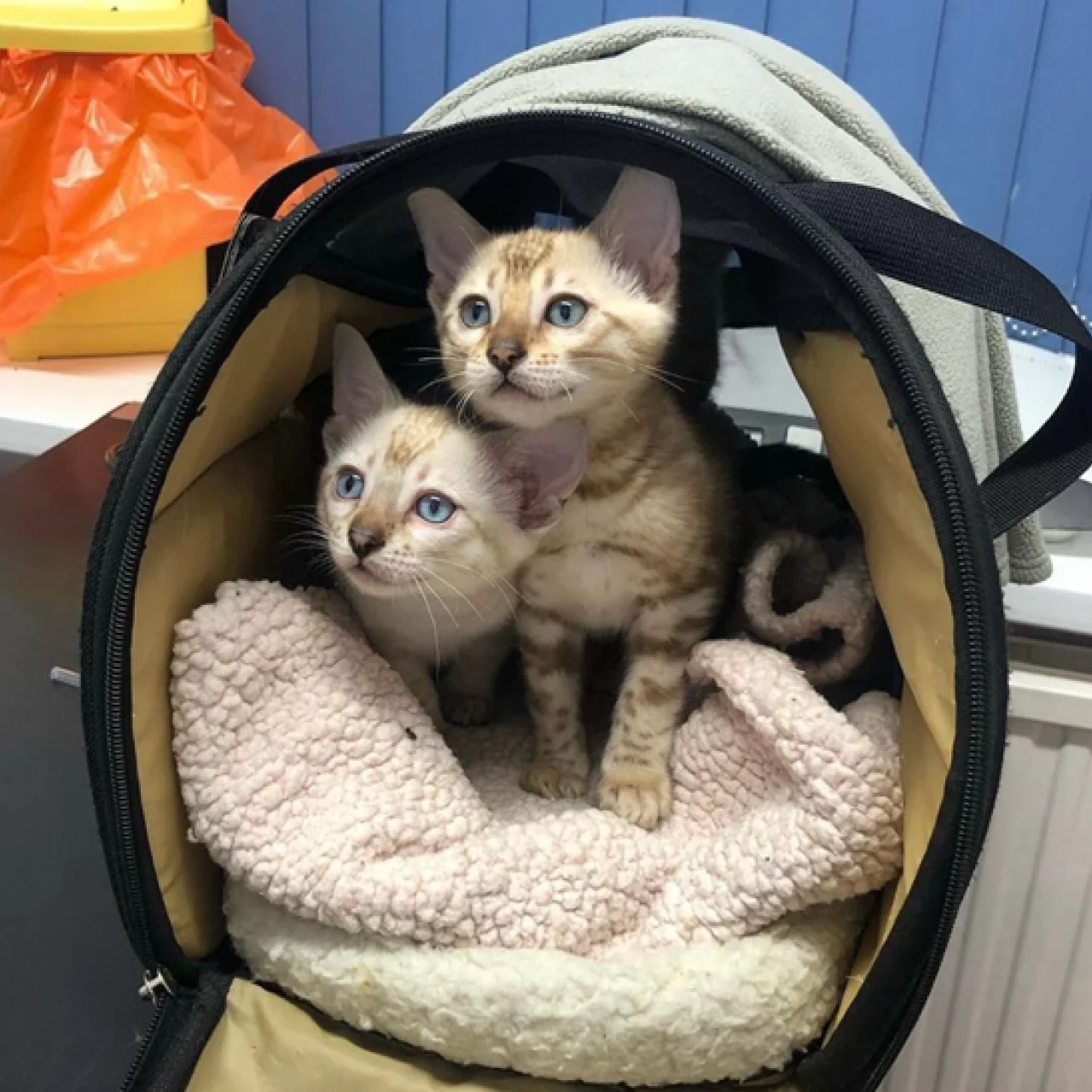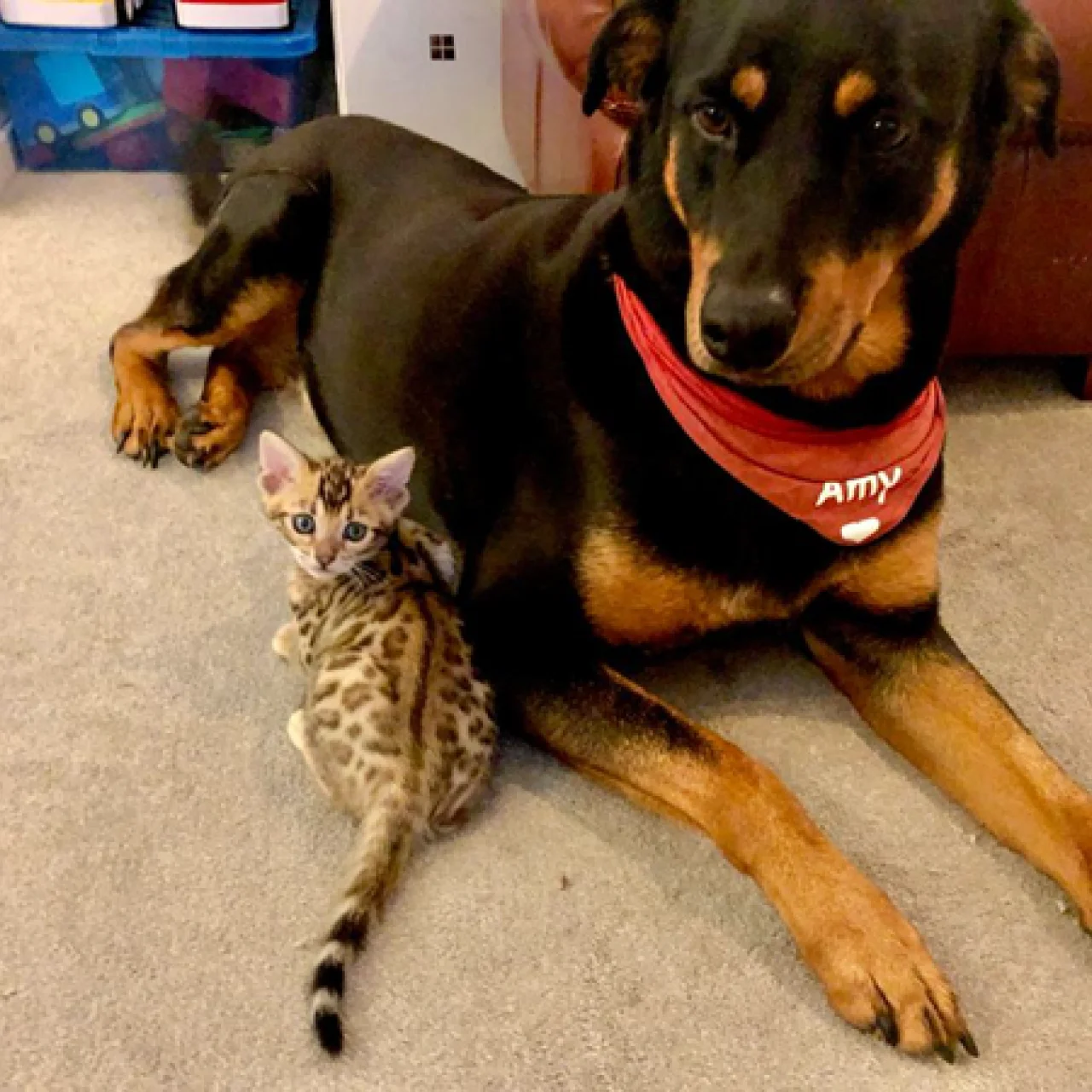This is by no means extensive and this list will be updated on going but these are the things I feel that are important.
Cattery:
Registered, clean and be able view/meet parents, they should be friendly and outgoing. they should be clean, bright with clear eyes and shiny coat. Some are kept outside, in purpose built buildings or in a family home. Studs are often outside due to spraying but many also house indoors.
Paperwork:
- Cattery certificates.
- Parents official TICA or GCCF (are the most common) paperwork, a ‘breeder’ pedigree is not proof the cat is registered or listed as being able to be bred as these are often homemade.
- Certificates of parents health tests, these can include but not limited to:
- PKDef - Genetic mutation causing pyruvate kinase deficiency (life threatening anaemia).
- PRA-b - Which causes autosomal recessive blindness in Bengal Cats.
- PKD - Progressive inherited condition which causes cysts on kidneys & ultimately kidney failure, this is a swab & scan to be complete.
- HCM is the most commonly diagnosed cardiac disease in cats. Feline Hypertrophic Cardiomyopathy (HCM) is a condition that causes the muscular walls of a cat's heart to thicken, decreasing the heart's efficiency and sometimes creating symptoms in other parts of the body. This is a scan that needs to be done annually as this is a progressive issue that is common in Bengals, a cat can be clear at 1 or 2 but can develop later in life, there is a huge variance as it can be mild and remain as is or can progress quickly.
- There are also blood, swabs and faecal tests that some catteries also routinely do.
Kitten(s):
Personally I don’t present kittens before 4 weeks so I will advise at this point. There are always exceptions and one rule won’t fit all kittens but they are usually approximately 400g. Their eyes and ears will be open. They will be wobbly, fall over their own paws often. They may have already left their ‘nest’ to explore. They should be pretty confident at this age and not skittish or hissing. There shouldn’t be too much resistance to being handled, they might cry out to Mum when being picked up but they are often talking and if Mum isn’t worried then all is well usually, remember Bengals are quite big talkers and it starts quite young.
At this stage the kittens coat will usually be fairly clear patten wise, if a little close together but should be just before the ‘fuzzy stage’ which is roughly 5-14 weeks of age but again sometimes this can vary but ask to see pictures of the previous litter if this wasn’t a 1st mating; this will give you some idea of how their coat should end up.
Kittens MUST stay with Mum for a minimum of 12 weeks, this is from an emotional and social point of view as kittens learn a huge amount of their positive behaviours.
TICA & GCCF both run an ethical breeder program - there are no laws currently protecting cats leaving at a younger age or cats being over bred (should be absolutely no more then 2 litters a year).
Kittens must come with 1st & 2nd vaccines at approximately 9 & 12 weeks, microchipped and wormed as a minimum. They should leave being well socialised and potty trained. Already spayed/neutered or a contract to do so, official TICA/GCCF paperwork and 4 weeks of insurance too.
No runny eyes, nose, not skinny or lethargic.
Etiquette:
A good breeder will want to know just as much about you as you do of them. Please remember when enquiring that often kittens are the breeders pride & joy and a message of ‘how much is it?’ possibly won’t get the reply you are looking for. Nothing fancy but just a small amount of information goes miles. Breeders should be open and honest about answering questions, no one knows everything but they should have at least a basic knowledge of what they are doing.



